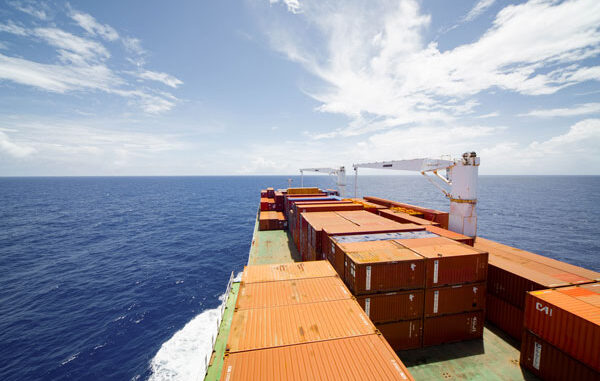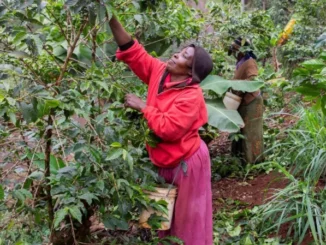
Kenya’s shipbuilding abilities are giving the country a competitive edge as East Africa rushes to take advantage of booming trade around its inland waterways.
NEWS ANALYSIS | BIRD AGENCY | Kenya is emerging as a significant shipbuilder in the East African region as the country taps into rising demand for inland water logistics on Lake Victoria and across the region.
The country this month commissioned its first domestically-built modern inland cargo ship, the MV Uhuru II, built by the military-controlled Kenya Shipyards Limited, with help from Dutch partner Damen Shipyards.
President William Ruto emphasized that the ship serves as a “catalyst for economic growth and development in our region.”
Designed for cargo transportation within Lake Victoria, MV Uhuru II boasts advanced systems capable of ferrying oil and other bulk cargo across the lake.
“From its hull structure and piping systems to its engines, electrical equipment, and firefighting system, every aspect of the ship has been carefully designed and constructed to ensure that it is able to meet the demanding needs of commercial shipping,” a description on the KSL website reads.
MV Uhuru II can transport up to 1063 tons of cargo, including 2 million litres of crude oil per trip, along with dry bulk goods such as cereals, fertilizers, sugar, and seeds. With a cruising speed of 14 knots, it outpaces its predecessor, the 1996-built MV Uhuru I, by four hours, ensuring timely deliveries.
Kenya Shipyards Limited’s main facility is at the Kenya Navy base in Mtongwe, Mombasa. The successful launch of MV Uhuru II adds to KSL’s capacity as a shipbuilder, proving it can not only build ships for Kenya’s ocean waters but also for East Africa’s inland waterways.
Operating as a limited company, KSL takes shipbuilding orders from all countries in the region, with reports showing it was building about 20 vessels in 2022 from orders made from across the region.
Zakia Ng’andu, a logistics manager at Famari Investment Limited, a Tanzania-based marine logistics company, explained that inland waterway logistics can play a significant role in economic development.
“They can accelerate intra-continental trade, especially in landlocked countries that often face transportation challenges,” she shared.
The East African region is currently one of the fastest-growing regions of the continent. AfDB projects the economic growth in the region will accelerate to 5.1% in 2023 and 5.8% in 2024, outpacing all the other African regions. The IMF outlook suggests the bloc’s GDP will hit US$347 billion this year, due to growth in key regions such as Ethiopia, Rwanda, Tanzania, Djibouti, and Kenya.
The majority of freight is transported by road through the region’s congested Northern Corridor, incurring economic and opportunity costs, particularly for time-sensitive cargo.
Harnessing the potential of Lake Victoria and other inland waterways could significantly reduce transport time and costs, benefiting mainly Tanzania, Kenya, and Uganda, which have shoreline access to the lake.
Kenya’s breakthroughs in shipbuilding, including plans for three more similar ships, position the country as a regional inland maritime logistics hub. With the African Continental Free Trade Area Agreement expected to significantly boost intra-African freight in the coming years, diversifying transport logistics in the region offers substantial benefits.
“Other benefits of inland waterways logistics include boosting connectivity, reducing congestion, increasing efficiency, and allowing for the implementation of sustainable, eco-friendly transportation,” Ng’andu explained.
Transport and logistics costs in East Africa currently account for 35%-42% of production costs.
Recognizing the opportunities, other East African countries – in particular, Tanzania – are also intensifying shipbuilding efforts. A Turkish firm is investing US$129 million in a shipyard project in Tanzania less than a year after South Korean companies Gas Entec and KangNam Corporation launched the MV Mwanza, a large freshwater passenger and cargo ship, on Lake Victoria.
In neighbouring Uganda, a purpose-built vessel is being constructed as part of the East Africa Marine Transport (EAMT) project. The ship being built in Entebbe is set to pioneer scheduled roll-on/roll-off freight transport services across Lake Victoria, connecting Port Bell in Uganda to the port at Mwanza, in Tanzania.
A 2022 study by the Shippers Council of East Africa showed that transport costs in the region can be as high as US $1.8 per km per container, almost double the US $1 per km per container that is considered international best practice.
Beyond individual country-level initiatives, regional organizations are also championing a range of projects for inland water transport. The Programme for Infrastructure Development in Africa, or PIDA, is a multi-sector program linking transport, energy, ICT, and transboundary water resources by working with regional economic blocs across Africa.
In its 2021–2030 list of planned projects, PIDA prioritizes three inland waterways transport initiatives that will enhance connectivity and economic viability across the East African region.
These include the improvement of Akagera River Transport (the Kagera is part of the headwater system of the Nile), the establishment of a navigation line between Lake Victoria and the Mediterranean Sea (along the Nile), and the extension of the national ICT broadband backbone to the DRC through Lake Tanganyika. The three projects will be spearheaded by the EAC.
However, Ng’andu outlines the need for careful planning, infrastructure development, and regulatory frameworks in order to fully realize the holistic value of inland waterways logistics.
“There is an opportunity to apply more development-focused strategies, like the use of public-private partnerships (PPPs). This has already led to the coming of DP World to invest in East Africa’s waterways; this paves the way for more investment in infrastructure, handling equipment, and better management,” she explained.
****
SOURCE: Bonface Orucho, bird story agency



